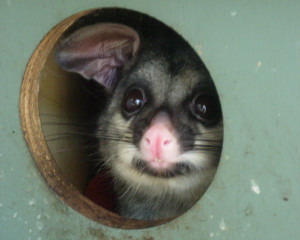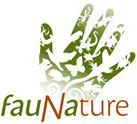 Australian citizens can become more involved in planning their cities with wildlife in mind thanks to a new tool developed by researchers at the ARC Centre of Excellence for Environmental Decisions (CEED).
Australian citizens can become more involved in planning their cities with wildlife in mind thanks to a new tool developed by researchers at the ARC Centre of Excellence for Environmental Decisions (CEED).
“When it comes to urban planning, protecting wildlife is often overlooked – but the loss of natural ecosystems in cities poses risks to public health and the quality of life of urban citizens,” says Dr Sarah Bekessy, of CEED and RMIT University. “Over half of Australia’s threatened species and ecosystems occur within the urban fringe and accelerating urbanisation is now a key threat to their survival.”
“Our team has developed a way to rank sites for development according to various priorities such as biodiversity loss, flood risk and transport planning.
“Decision-makers can use this tool to balance different objectives and explore the impact of trade-offs between competing priorities.
“You can then have a democratic process in which citizens are involved in helping to decide the right weight to give to the various planning priorities.
“The public can – and should – be drawn into the process of ranking development priorities so that important decisions such as protecting wildlife are made by citizens rather than planners,” she says.
“We believe that incorporating the public’s view on the protection of wildlife within an urban development plan will lead to a greater sense of ownership of native urban wildlife by Australians, which is highly desirable when you consider that almost 90 per cent of us live in metropolitan areas.”
Further important research by CEED also indicates that cities can be planned in a way that both encourages and protects native wildlife.
Jessica Sushinsky, Professor Hugh Possingham and Dr Richard Fuller of CEED and the University of Queensland recently published a study which found that birds were much more plentiful in cities that mixed areas of intensive development with open green spaces.
“Urban development usually reduces the number of birds in a city, but building more compact cities and avoiding urban sprawl can slow these reductions significantly,” says lead author Jessica Sushinsky.
“In a city like Brisbane where there are large green parks with a mix of vegetation we still find a relatively healthy diversity of birds such as Lewin’s honeyeater, grey shrike-thrush, the red-backed fairy-wren and the striated pardalote, which rely on more complex habitats than are usually found in private, manicured backyards.
 “Where compact housing development leaves these important green spaces intact we see fewer local extinctions, even in Brisbane which has undergone substantial growth in recent years.
“Where compact housing development leaves these important green spaces intact we see fewer local extinctions, even in Brisbane which has undergone substantial growth in recent years.
“Urban sprawl on the other hand not only results in the disappearance of many urban-sensitive birds but also leads to an increase in feral birds such as the common myna or the spotted turtle dove, both invasive species in Australia.
“While our findings suggest that future cities should be built ‘up’ rather than ‘out’, any reduction in the size of private backyards would also mean it is important to retain large public green spaces leading to cities that provide a better quality of life for both people and wildlife.”
“CEED’s research is about how we make decisions to protect the environment,” says Prof Hugh Possingham, Centre Director at CEED. “These two studies are an excellent example of the co-ordinated research being undertaken through the Centre.
“Understanding how different types of urban development impact on birds means that the tool developed by Dr Bekessy and her colleagues can be used to balance the need for urban growth with important conservation priorities. Some priorities may even be decided by popular vote.”
The first paper “Transparent planning for biodiversity and development in the urban fringe” by Sarah Bekessy, Matt White, Ascelin Gordon, Atte Moilanen, Michael McCarthy and Brendan Wintle appears in the journal Landscape and Urban Planning.
The second paper “How should we grow cities to minimize their biodiversity impacts?” by Jessica Sushinsky, Jonathan Rhodes, Hugh Possingham, Tony Gill and Richard Fuller appears in Global Change Biology.
CEED is the Australian Research Council Centre of Excellence for Environmental Decisions.
